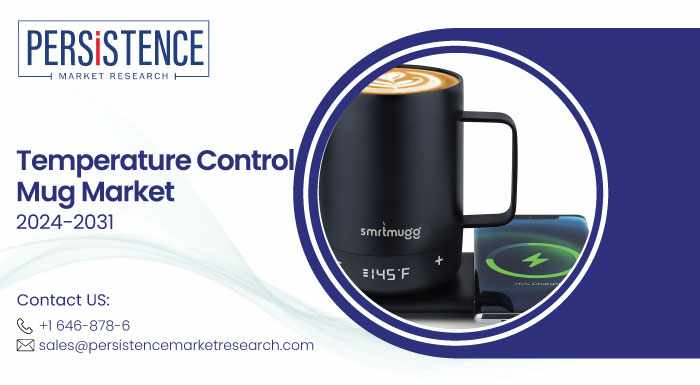
The Acid Violet 43 market is witnessing robust growth as it expands its application base in the haircare and textile industries. Known for its vibrant purple hue, excellent solubility, and superior colorfast properties, Acid Violet 43 is becoming a preferred choice for brands aiming to meet consumer demand for innovative, versatile, and aesthetically appealing products. The increasing adoption of Acid Violet 43 in haircare formulations and textile designs reflects shifting consumer preferences toward vibrant, trendy, and customized product offerings.
Read More: https://www.persistencemarketresearch.com/market-research/eyewear-packaging-market.asp
Understanding Acid Violet 43's Role in the Market
Acid Violet 43 is a synthetic dye commonly used across industries due to its vivid color, stability, and compatibility with diverse applications. It is primarily utilized in the textile industry for fashion apparel and home furnishings and has recently found significant traction in the haircare sector. With its ability to deliver intense pigmentation while maintaining superior performance characteristics, Acid Violet 43 is in high demand among both industries.
The versatility of Acid Violet 43 has established it as a sought-after ingredient in consumer goods, particularly within beauty and textiles.
Rising Demand in the Haircare Sector
The haircare industry's booming demand for unique, vibrant hair colors is a significant driver for Acid Violet 43's increasing adoption. Consumers are exploring creative, bold, and trend-driven hair color options, propelling haircare brands to incorporate innovative dyes like Acid Violet 43 into their formulations.
Key Factors Driving Haircare Adoption:
Trendy Hair Color Movements:
Consumers are increasingly opting for non-natural, vibrant hair colors that align with current fashion trends. Purple shades like Acid Violet 43 are particularly popular among fashion-forward individuals and social media influencers.Customization and Personalization:
The demand for customized hair colors has led brands to rely on dyes that can provide long-lasting, brilliant, and versatile color results. Acid Violet 43 offers excellent adaptability and can be mixed with other colors for personalized looks.Demand for Color Stability:
Acid Violet 43 offers excellent colorfastness, ensuring that hair colors maintain their vibrancy over time without fading, a quality that resonates with consumers seeking long-term results.Increasing Use in Hair Treatments:
Beyond hair dye, Acid Violet 43 is being incorporated into treatments like toners and conditioning treatments. These products help neutralize brassy tones in dyed hair and maintain the vibrancy of cool-toned hair.
The haircare sector's demand for vibrant, long-lasting results has solidified Acid Violet 43's role as a preferred choice, providing both stylistic versatility and product performance.
Textile Sector’s Role in Driving Market Growth
In addition to the haircare boom, the textile industry continues to be a stronghold for Acid Violet 43. With consumers increasingly drawn to vibrant colors, sustainable fashion, and custom designs, the textile industry remains a key driver for market growth.
Why Acid Violet 43 is Popular in the Textile Industry:
Fashion Trends Favor Bold and Unique Colors:
Acid Violet 43's vibrant hue appeals to designers and consumers aiming for standout designs, particularly in fashion apparel and accessories.Home Furnishings Demand:
Beyond clothing, Acid Violet 43 is also applied in the production of home textiles such as upholstery, curtains, and decorative fabrics. These applications emphasize rich, aesthetic tones that complement modern interior designs.Durability and Color Stability:
The market favors Acid Violet 43 for its durability and superior colorfast properties, ensuring that textiles retain their striking hue after repeated use and washing.Sustainable Alternatives in Fashion:
The textile sector is undergoing sustainability shifts, and Acid Violet 43 is becoming part of this movement. Innovations and technological advances have allowed manufacturers to explore eco-friendly, low-waste dyeing methods while maintaining its performance characteristics.
Key Trends Shaping the Acid Violet 43 Market
Several trends are propelling Acid Violet 43's growth in both the haircare and textile industries:
Consumer Demand for Vibrant and Customizable Products:
The rising demand for bold colors and personalized consumer products has created new opportunities for Acid Violet 43's application in haircare and fashion.Sustainability Trends:
With an increased focus on environmentally conscious solutions, both sectors are looking for ways to reduce waste through innovative, low-impact manufacturing techniques without compromising product quality or aesthetics.Social Media Influence:
Social media trends are shaping beauty and fashion choices. Influencer culture has fueled the popularity of vibrant hair colors and distinctive textiles, directly benefiting the demand for Acid Violet 43.Technological Innovations in Dyeing Methods:
Technological advancements in dye application methods are ensuring that Acid Violet 43 can be applied more efficiently, with minimal water waste and reduced environmental impact.Emerging Markets:
Growing disposable incomes in emerging markets, coupled with rising fashion and beauty consciousness, are expanding the market for Acid Violet 43. Both sectors are seeing increased product demand in regions such as Asia-Pacific and Latin America.
Market Challenges to Overcome
While the opportunities are abundant, there are also challenges influencing the growth trajectory of Acid Violet 43:
Environmental Concerns:
The synthetic dye industry is under scrutiny due to its environmental footprint, with increased efforts needed to reduce water waste and pollution associated with traditional dyeing methods.Regulatory Pressures:
With governments implementing stricter policies on synthetic dyes, companies must innovate by developing compliant, eco-friendly alternatives.High Competition from Alternatives:
Acid Violet 43 competes with other synthetic and natural dyes. Brands must differentiate their formulations through innovation, cost reduction, and improved performance.
Future Outlook for Acid Violet 43
The future for Acid Violet 43 appears promising, driven by the expansion of its applications in both the haircare and textile sectors. With technological advancements, sustainability efforts, and consumer preferences converging, companies are focusing on creating innovative, eco-friendly versions of the dye while addressing environmental concerns.
Opportunities Ahead:
Sustainable Innovation: Increased R&D into biodegradable, non-toxic versions of Acid Violet 43 to meet the growing consumer and regulatory demand for sustainability.
Customization in Beauty & Fashion: Offering more versatile shades and innovative formulations to align with consumer desires for personalization.
Market Expansion: Growth in emerging markets with rising disposable incomes and increased interest in the beauty and textile sectors.
Conclusion
The Acid Violet 43 market is thriving as it capitalizes on its applications in the haircare and textile industries. With its vibrant color properties, versatility, and increasing use in sustainable innovations, Acid Violet 43 is positioned at the intersection of consumer trends and technological advancements.
As the demand for bold colors and eco-conscious practices intensifies, Acid Violet 43 will likely continue its upward trajectory. The haircare and textile industries are just beginning to scratch the surface of its potential, paving the way for exciting innovations and sustainable solutions in the years ahead.




















Write a comment ...